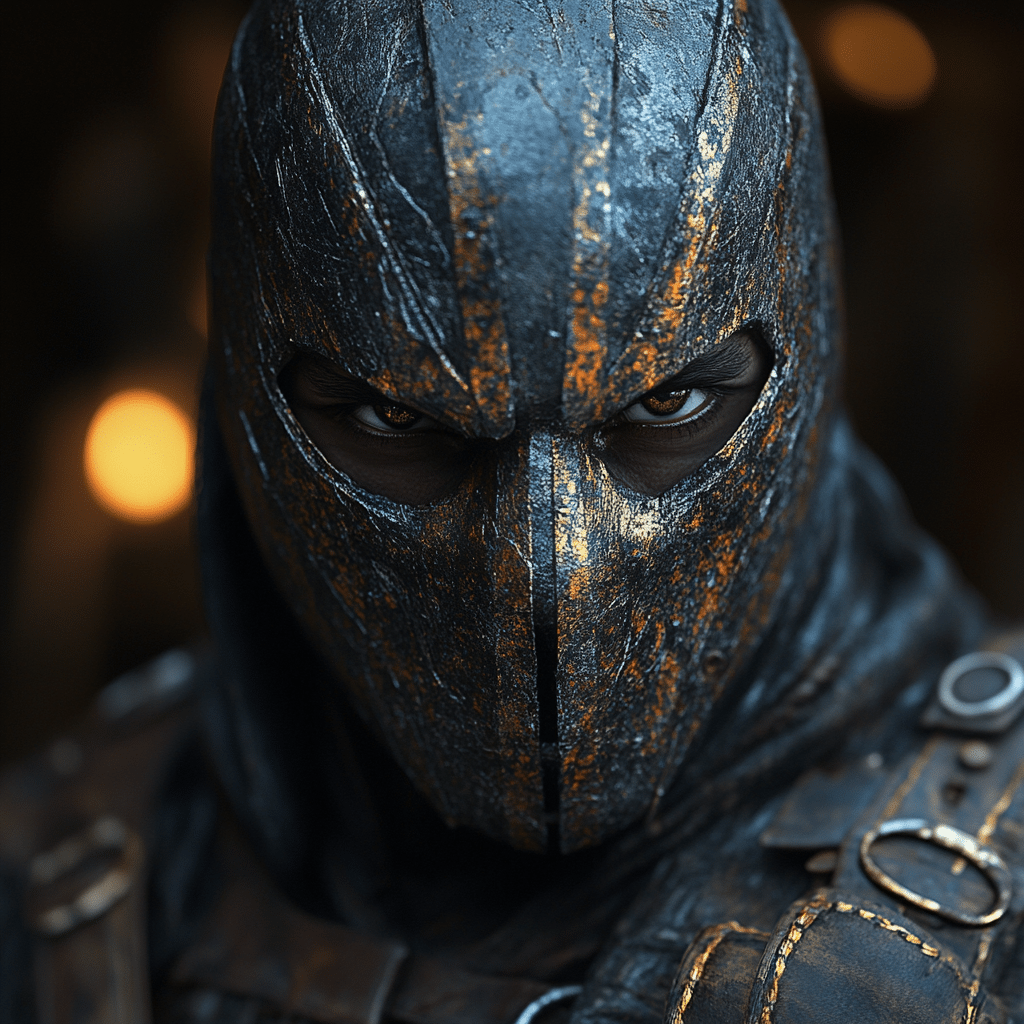Luchadores, or masked wrestlers, aren’t just entertainers; they’re cultural icons that resonate deeply within Mexican culture and beyond. Their masks are far more than fancy accessories; they carry profound symbolism that reflects the luchador’s unique persona, wrestling style, and cultural heritage. These masks represent mythology, personal stories, and a way of honoring the collective spirit of a people. Miss out on understanding these legends, and you might as well be missing the essence of Mexican folklore itself!

The Symbolism of Luchador Masks in Mexican Culture
When you see a luchador stepping into the ring, you’re witnessing a spiritual event of sorts. Each mask is like a sacred artifact, deserving admiration, respect, and even a little bit of fear. These powerful symbols help wrestlers separate their personal lives from their in-ring personas. When a luchador dons their mask, they’re not just putting on a costume—they’re becoming a walking embodiment of folklore, bravery, and artistry.
The masks reflect deep historical roots, often taking inspiration from ancient Aztec warriors. They serve as trophies of pride for many Mexican communities, capturing nostalgia and cultural identity. For a luchador, losing their mask is akin to losing their soul. It’s an identity-shattering experience. Just picture it: a wrestler’s mask removed means stripping away everything that makes them who they are in the ring. In the case of El Santo, he never lost his mask and only revealed his face just before he passed away, becoming a mythic figure forever revered in the world of lucha libre.
Curious how these masks evolve in meaning? Well, they capture everything from triumph to tragedy, leading us to some of the most legendary luchadores who birthed these iconic personas. So, let’s dive deep into the lives and legacies of five iconic luchadores and the stories that their masks tell.

Top 5 Legendary Luchadores and Their Masks
1. El Santo: The Silver Legend
El Santo, or “The Silver Masked Man,” is the crème de la crème of luchadores! Debuting in the 1940s, El Santo became the symbol of heroism, standing valiantly against evil both in the ring and on the silver screen. His mask, shining bright in its silver hue, stood for purity, justice, and hope in post-revolutionary Mexico. Not just a wrestler, El Santo’s iconic films played a pivotal role in popularizing lucha libre culture, solidifying his place as a legend.
The captivating thing about El Santo is that he didn’t just wrestle; he fought for the oppressed! Imagine the cheers from fans as he battled villains, becoming a hero on multiple fronts. This dual existence allowed him to leave an indelible mark on Mexican culture, making each match a celebration of good versus evil. It’s no wonder his legacy lives on as a touchstone for modern luchadores!
2. Blue Demon: The Rival of El Santo
Hold on tight! Here comes Blue Demon, El Santo’s fiercest rival! Clad in a blue mask decorated with striking designs, he symbolized strength and valor every time he stepped through the ropes. The beauty of Blue Demon lies in his complexity; he oscillated between hero and anti-hero, presenting layers that left fans both intrigued and entertained. He didn’t just wrestle; he acted in films that blended lucha libre’s theatricality with rich storytelling.
His blue mask became an iconic representation of lucha libre amidst the chaotic narrative of good versus evil. The legendary battles between Blue Demon and El Santo showcased their deep rivalry and captured the imagination of fans for generations. This wasn’t just wrestling; it was an era where every match told a story, reflecting the cultural dynamics of the time.
3. Rey Mysterio: The Modern Sensation
And here’s the modern-day sensation: Rey Mysterio! Known for a mask inspired by the legendary luchador “Ray Misterio,” he’s taken lucha libre worldwide. Over time, he’s adapted his mask into vibrant designs, each packed with meaning and flair. As a prominent figure in WWE, Mysterio has shown how lucha libre can transcend borders, boosting its appeal and putting it on the international stage.
With every match, Rey symbolizes hope and resilience, especially for fans who connect with his underdog narrative. He embodies the idea that anyone can rise and shine, no matter the challenges. Mysterio’s influence is an inspiration to many, proving that the sacred tradition of the luchador mask thrives in every generation!
4. Eddie Guerrero: The Charismatic Trickster
Let’s shine the spotlight on Eddie Guerrero—a true wrestling enigma! Known for his charm, wit, and exceptional moves, Eddie’s unmasking in the U.S. marked a shift from traditional lucha libre to a more charismatic performance style. While his early career saw him don a mask, it was his personality that skyrocketed him to fame in the American wrestling scene.
Guerrero’s tricks inside and outside the ring showcased the art and complexity of wrestling, blending athleticism with storytelling to create moments that fans would never forget. This multifaceted approach exemplified how a luchador could evolve and stay relevant in a constantly changing landscape. His legacy inspires today’s wrestlers, reminding us that charisma is just as important as the mask!
5. La Parka: The Dancer of Death
Finally, let’s talk about La Parka—the Dancer of Death! Recognizable for his skeleton-themed mask, La Parka is the life of the lucha libre party. The mask, adorned with intricate skeletal designs, speaks volumes about life, death, and celebration—a wink to the rich traditions of Mexico, particularly around Dia de los Muertos (Day of the Dead).
Each match La Parka participated in was like a theatrical performance, seamlessly merging entertainment with cultural homage. His flamboyant style made each encounter a spectacle, capturing the hearts of fans around the world. La Parka’s legacy shines brightly as he transformed lucha libre into a vibrant art form that celebrates life’s complexities!

Luchador Masks and Their Cultural Significance
So, why are luchador masks considered treasures in Mexican culture? Well, they encapsulate diverse narratives that span history, identity, and community. A luchador’s mask is a potent symbol, representing not just the wrestler but the collective spirit of the culture. It evokes feelings of nostalgia, pride, and most importantly, respect!
The act of wearing a mask in lucha libre is almost like wielding a superpower. It establishes a mythical identity that blurs the lines between performer and audience. The emotional weight these masks carry is far beyond mere fabric; they’re woven with cultural significance. Taking a luchador’s mask off isn’t just a physical act; it’s like dismantling their identity—it’s almost sacrilegious!
Lucha libre isn’t just a fighting style; it’s a cultural experience. Whether it’s the well-trodden paths of legends like El Santo or the modern flair of Rey Mysterio, each mask tells a story worth retelling. Encapsulated within these masks is a mosaic of heritage and artistry that continues to be celebrated across generations.

The Future of Lucha Libre and Its Legends
As we look ahead, the world of lucha libre is as vibrant and evolving as ever! Modern luchadores are harnessing the allure of masks while blending contemporary themes and designs to make powerful statements about society today. There’s a resurgence of interest in wrestling that’s leading to fresh narratives steeped in the rich traditions of lucha libre.
New stars like Alex Guerrero, who pays homage to traditional lucha styles while embracing cutting-edge athleticism, embody the next phase of this art form. This growth signifies not just a survival of tradition, but its flourishing in a new light. The luchador’s mask remains a timeless badge, instilling bravery and artistry, and it shows no signs of diminishing in popularity!
Each luchador legend carries a legacy carved from rich cultural narratives, and every layer of meaning woven into their masks is reminiscent of the intricate tapestries of Mexican folklore. These characters, their masks, and the stories they tell will undoubtedly continue captivating audiences, ensuring the lively world of lucha libre thrives in an evolving cultural landscape for generations to come.
So next time you stumble upon a masked wrestler, remember that behind that marvelous mask lies a treasure trove of legends, identity, and a rich history woven into the fabric of Mexican culture.

Luchador Legends and Their Sacred Masks Explained
The Mystique Behind Luchador Masks
Luchadores, or masked wrestlers, have long been an emblematic facet of Mexican culture, blending athletics with theatrical flair. These vibrant athletes are not just fighting legends; their masks carry deep symbolism, often representing heroic qualities or the lucha libre character they embody. The intricate craftsmanship of a mask can resemble works of art, akin to those seen in films like Maui Moana, showcasing creativity and cultural heritage. Additionally, much like the varied stories in Carolina Miranda, each luchador has a distinct persona, turning the ring into a stage where folklore meets reality.
Masks and Their Significance
Masks aren’t just for show; they’re integral to a luchador’s identity. When a luchador dons their mask, it’s like flipping a switch – they become someone else entirely. This transformation plays a crucial role in elevating the entertainment aspect of the sport. And just as every detail matters in a beloved character, like Jirachi from the Pokémon universe, every mask tells a story. Some luchadores even have traditions where they never remove their mask, representing a lifelong commitment to their persona, reminiscent of the dedication seen in the roles played by actors like Paul Benedict.
The Legacy of Lucha Libre
The lucha libre tradition empowers its wrestlers, allowing them to project strength and honor, much like how themes of perseverance resonate in various narratives. Interestingly enough, myths surrounding luchadores can sometimes rival other pop culture phenomena. For example, there are hushed tales about luchadores that enter into the realm of folklore, almost like urban legends tied to sports. And while some might roll their eyes, parallels can be drawn between the secrets of lucha libre and other adventures, like the summer celebrations in Vaca, or the poignant social commentaries found in issues such as voluntary childlessness. In the vibrant world of lucha libre, each match is loaded with drama, passion, and a hint of mystery, undeniably marking these wrestlers as icons of both culture and sport.

What is a luchador?
A luchador is a professional wrestler in the Mexican wrestling style known as lucha libre, which emphasizes high-flying moves and athleticism. These wrestlers often come from wrestling families and may belong to stables, enhancing their storylines and rivalries.
What happens if a luchador is unmasked?
When a luchador is unmasked, it’s a big deal. This usually means they’ve lost a match that required them to take off their mask, which can be seen as losing their identity since the mask is highly significant in lucha libre culture.
Why can’t luchadores show their face?
Luchadores typically don’t show their faces because their masks represent their persona and legacy. Losing their mask is a serious matter, often seen as a loss of identity and honor, which is why many never unmask, with only a few exceptions.
How fake is lucha libre?
While some might consider lucha libre “fake,” it’s more about storytelling, like a live action soap opera. Most matches have predetermined outcomes, but the athleticism and stunts are very real, showcasing incredible talent and skill.
What is a female luchador called?
A female luchador is called a luchadora, and they compete just like their male counterparts, showcasing the same level of athleticism and theatricality in lucha libre.
What does lucha mean in Spanish slang?
In Spanish slang, “lucha” means “fight” or “struggle,” reflecting the physical and emotional battles seen inside the ring.
Can a woman be a luchador?
Absolutely, women can be luchadores, and many have made significant names for themselves in the sport, breaking barriers and showcasing their skills just like the men.
Who is the most famous luchador?
The most famous luchador is often considered to be El Santo, a legendary figure who became an icon of lucha libre, beloved for his films and wrestling career.
Which luchador never took off his mask?
El Santo is the luchador who never took off his mask for most of his life. He kept it on until shortly before his death, which adds to his legendary status.
Do luchadores still exist?
Yes, luchadores exist today, continuing the tradition of lucha libre, with many new stars emerging in Mexico and beyond, keeping the spirit alive.
Why did Rey Mysterio unmasked himself?
Rey Mysterio unmasked himself in WCW to signify a new chapter in his career and to embrace a different persona after years of wrestling with his mask.
Are there female lucha libre?
Yes, there are plenty of female lucha libre athletes, and they are gaining recognition and respect within the wrestling community.
Was Eddie Guerrero a lucha libre?
Eddie Guerrero had a background in lucha libre, particularly through his family, the Guerreros, and incorporated many lucha libre styles into his wrestling throughout his career in the States.
Are there female luchadores or only for men?
There are definitely female luchadores in lucha libre, and they have their own distinct identities and followings, proving that this sport is for everyone, not just men.
What are the bad guys in lucha libre called?
The bad guys in lucha libre are called rudos, and they often play the villain roles in matches, engaging in underhanded tactics to entertain the fans.
Who is the most famous luchador?
El Santo is widely considered the most famous luchador in history, thanks to his unmatched legacy and influence within lucha libre culture and beyond.
What does lucha mean in Mexico?
In Mexico, “lucha” means “fight,” emphasizing the combative nature of the sport, while also signifying the historical and cultural importance behind the fighting styles.
What is the meaning of luchadora?
“Luchadora” simply means “female fighter” or “female wrestler” in Spanish, celebrating the contributions of women in the lucha libre scene.
What fighting style do luchadores use?
Luchadores use a variety of fighting styles, but they are specially known for high-flying maneuvers, acrobatics, and a mix of technical wrestling, making their matches thrilling to watch.






















